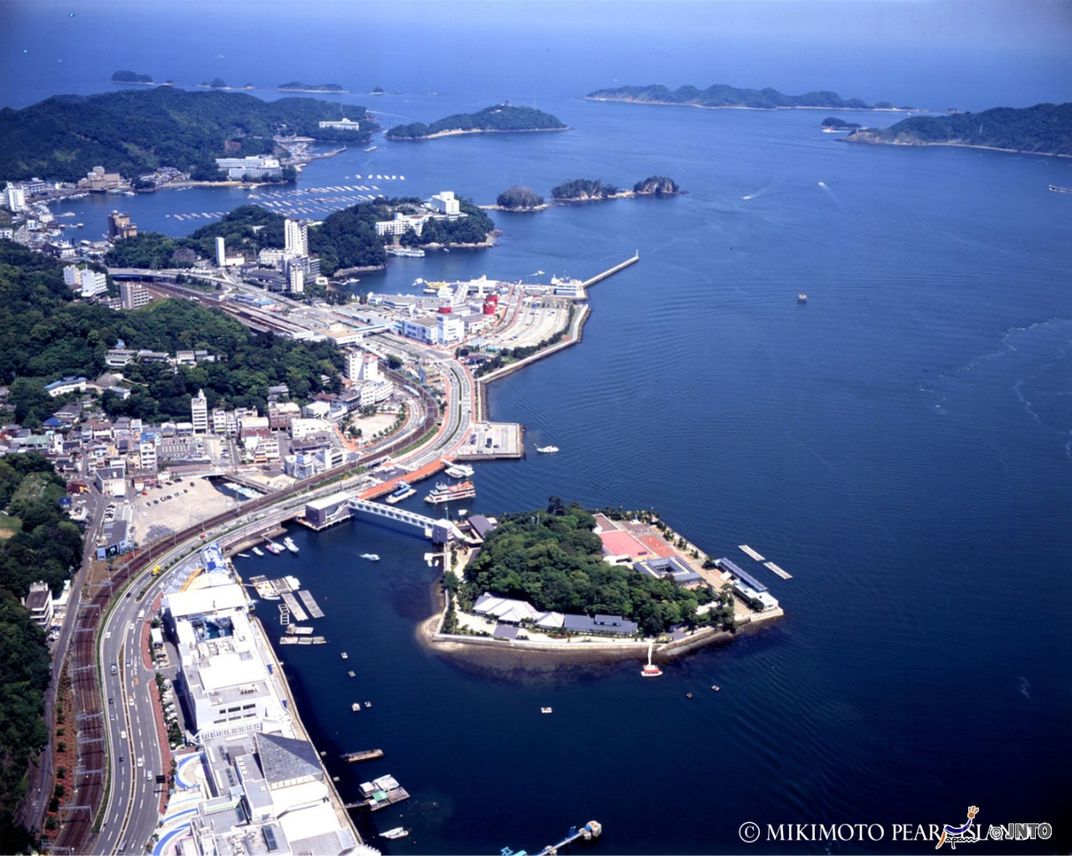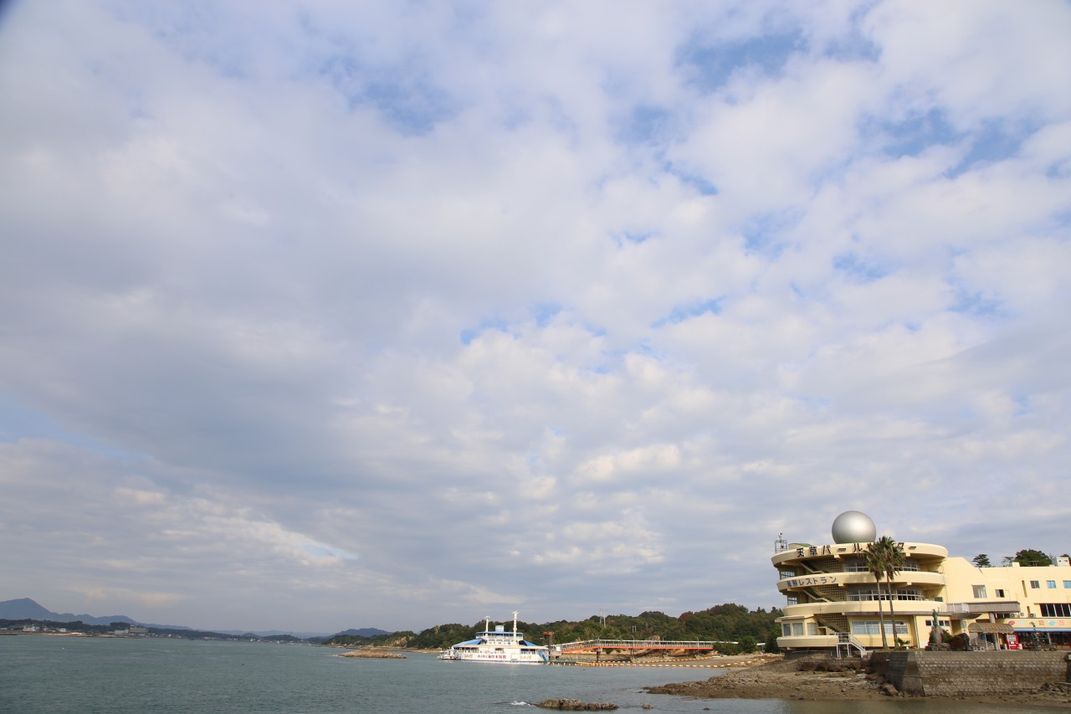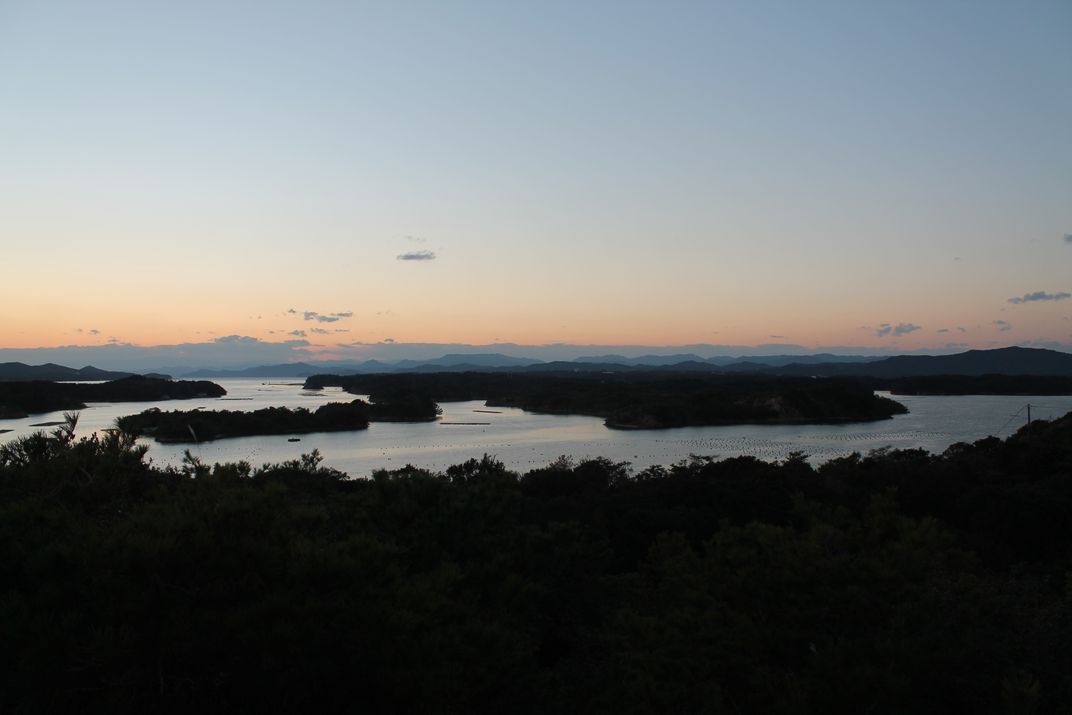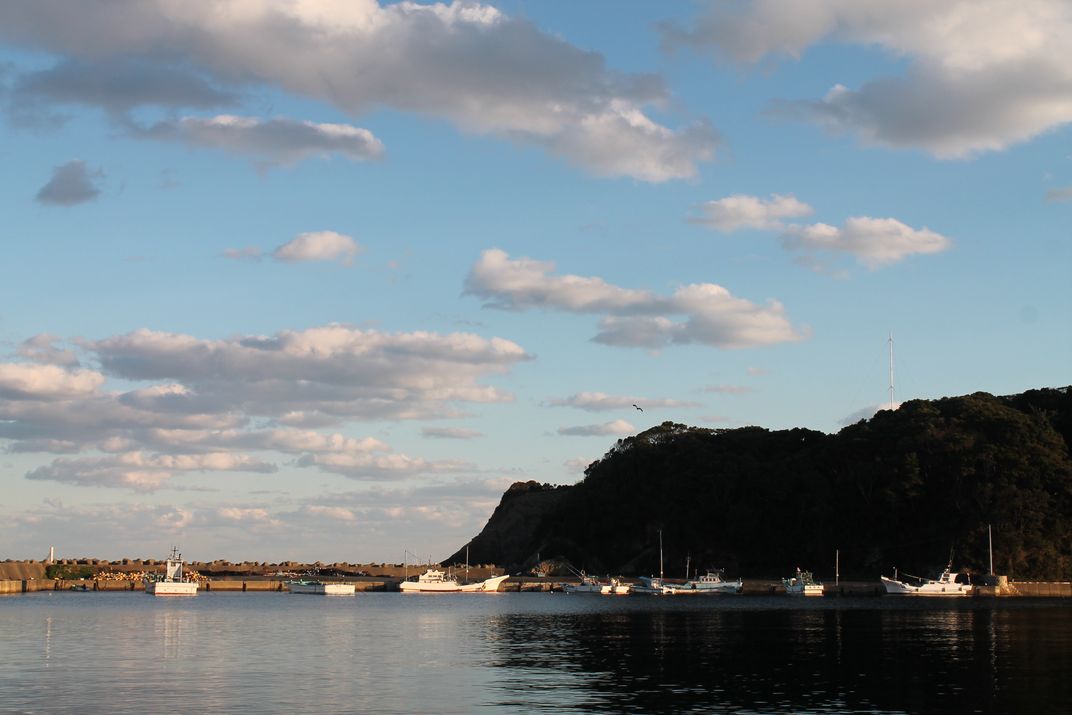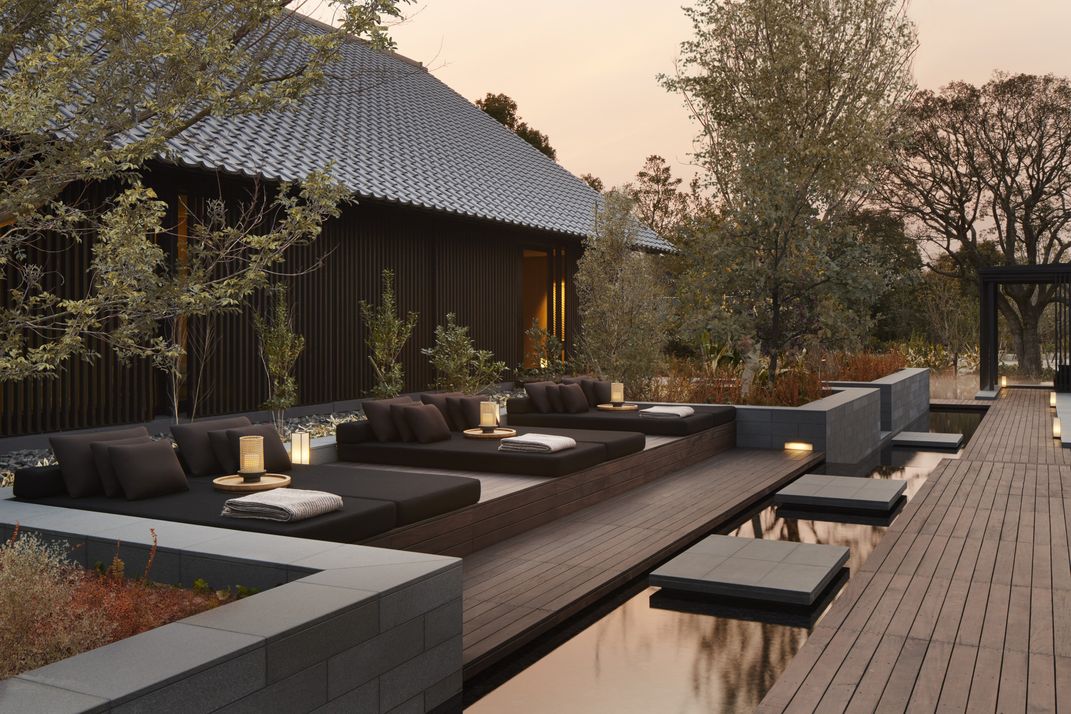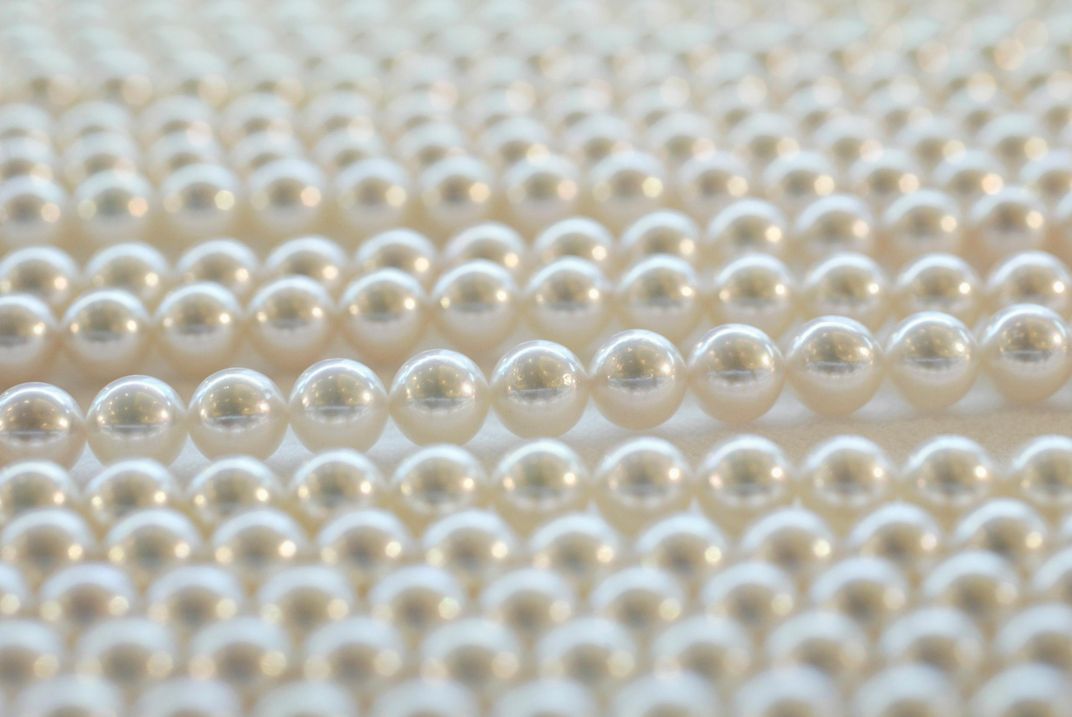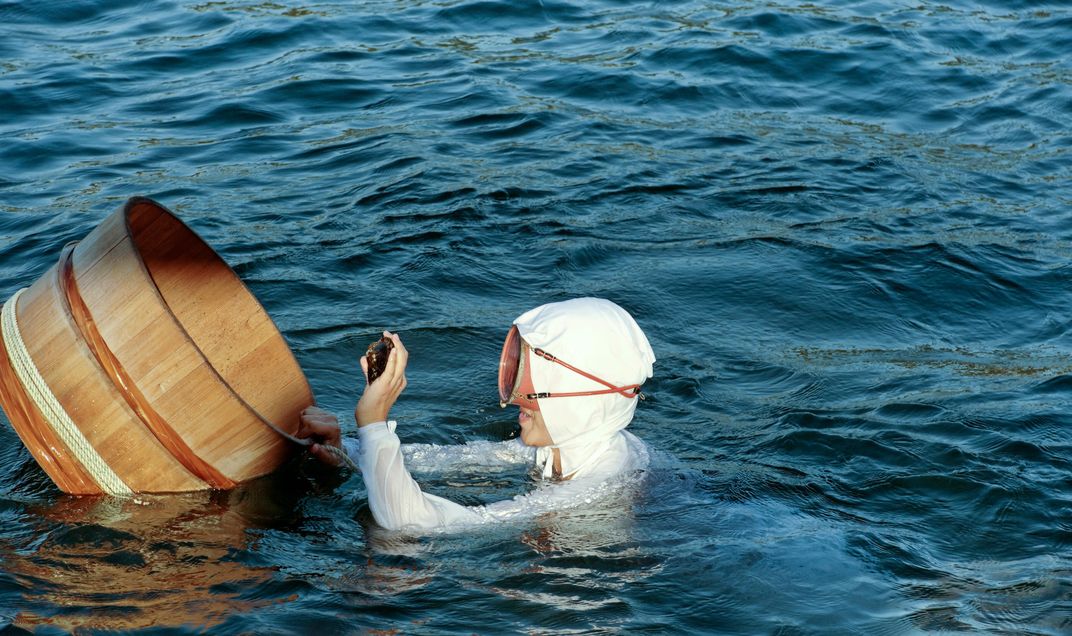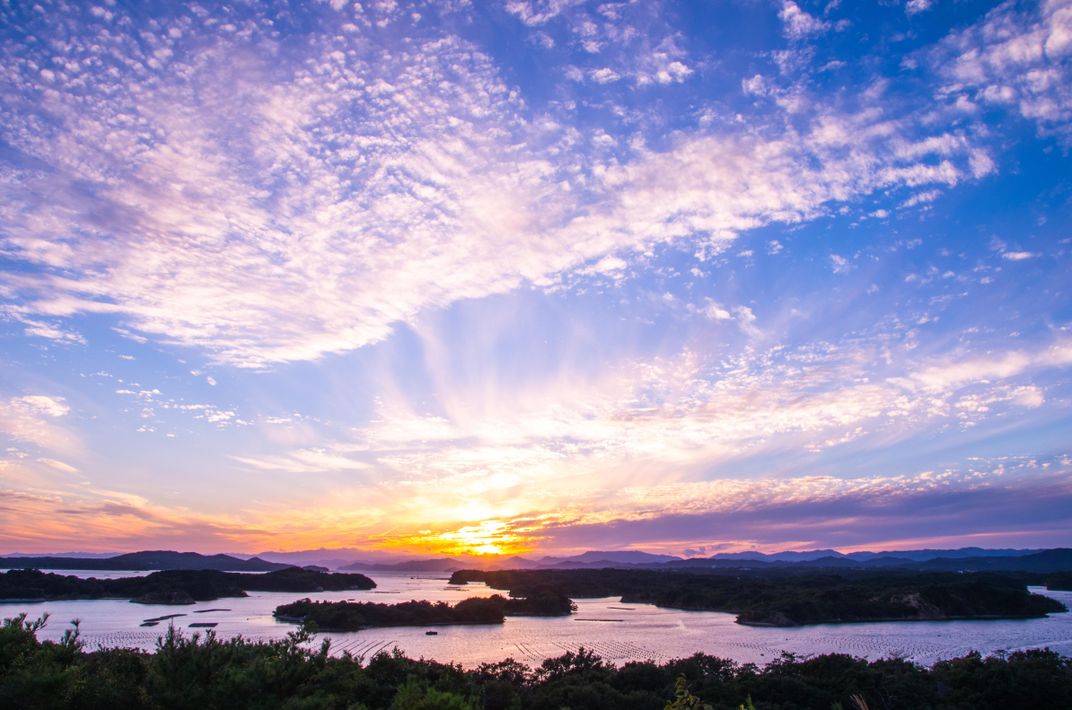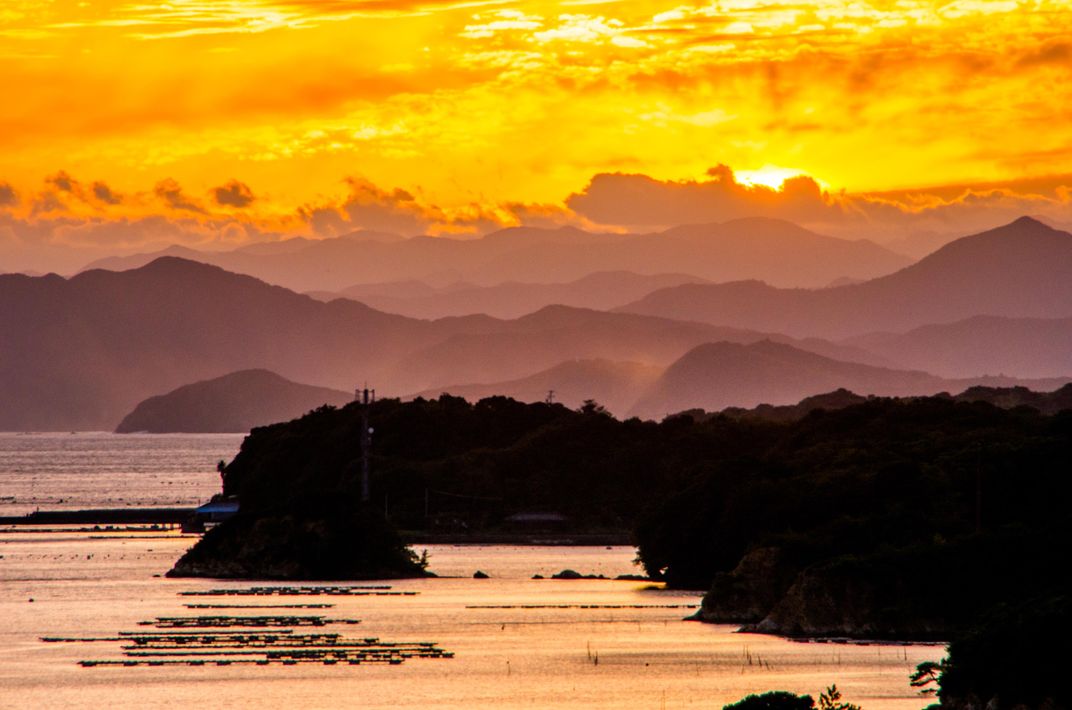Travel to the Birthplace of Pearls
Ago Bay is the pearl capital of the world
Just a three-hour bullet train ride from Tokyo lies a quiet bay—the perfect place to find some peace. Its natural beauty, which includes the bluest ocean and dots of green islands everywhere, brings reverence to visitors. But Ago Bay is more than a scenic jewel—it’s a place where real-life jewels are born.
Ago Bay, an estuary filled with calm waters and sheltered inlets, is warmed by offshore currents. It’s the perfect environment for pearls. And it's where a Japanese entrepreneur named Kochiki Mikimoto started Japan's first pearl farming operation in the early 1900s.
The son of a a noodle maker, Mikimoto had no formal scientific training, leaving school early to sell vegetables in the local market. But Mikimoto was drawn to the sea and intrigued by the incredible value of the rare pearls that were pulled up from the sea floor. Determined to uncover the oyster's secret, Mikimoto and his wife, Ume, opened their first pearl farm in the Shinmei inlet in Ago Bay, near the town of Shima, in 1888. Over the next few years, Mikimoto experimented with different techniques, nearly loosing everything when a red tide killed most of his oyster crop. Through extensive trial and error, he produced and received the first patent for creating hemispherical, half-domed pearls (called mabes) in 1896.
As with many inventions, it's hard credit a single creator. Independently, two other Japanese inventors, Tatsuhei Mise, a carpenter, and Tokichi Nishikawa, a government biologist, possibly influenced by a British biologist working in Australia where Nishikawa spent time, invented and patented similar techniques at around the same time, eventually combining and patenting their method. By 1908, Mikimoto had developed a new process for culturing perfectly round pearls in the mantle tissue that clings to the outer edge of oyster shells, but his method wasn't as commercially viable as the Mise-Niskikawa method. By striking a deal with the other inventors, Mikimoto became the champion and figurehead of a new industry.
A showman and promoter, Mikimoto took cultivated pearls to the world stage. He was known to burn piles of imperfect pearls as a spectacle for journalists and exhibited a pearl-covered Liberty Bell at the the 1926 World Exposition in Philadephia. The industry boomed, and Ago Bay became the pearl capital of the world.
Producing $16 billion worth of pearls during its peak season in its best years, the pearl industry "is one of the most important industries for local people," Kazuhiko Yasu of the Shima Tourism Association tells Smithsonian.com.
The modern process of farming pearls is twofold. First is the cultivation of pearl oysters, or akoyagai in Japanese. Then, cultured pearls are produced. A small nucleus bead is inserted into the oyster, along with mantle tissue from a donor shell to serve as a catalyst for the pearl sac. After the bead is inserted into the mantle, the oyster surrounds it with a lustrous nacre, or inner layer of mother-of-pearl. Give it time, and then, as if magic, you have pearls. In the case of Akoya pearls, this process takes between three to four years. The bigger the pearl, the bigger the oyster that produced it—and the longer it takes to grow.
Each element in Ago Bay—water temperature, oxygen level, the quality and amount of plankton—is perfect for pearls. “The important thing for farming pearl oysters is to make a comfortable environment for them,” Kiyoo Matsuzuki, who directs the Mikimoto Pearl Island Museum, tells Smithsonian.com. “The most important priority for local people is to keep Ago Bay’s beautiful environment pristine.”
In order to protect their pearl powerhouse, locals established the Ago Bay Nature Restoration Council to save Ago Bay from ecosystem degradation and ebbing marine resources in 2008. Yasu tells Smithsonian.com that the area has embraced a satoumi approach (sato means sea, umi human) that brings together people and their environment.
Ago Bay’s marine and coastal landscapes have been formed and maintained by prolonged interaction between humans and ecosystems, Yasu explains, so people must participate in the preservation of their local landscape. “The area has worked very hard with the Mie prefecture Fisheries Research Institute to further protect Ago Bay from any environment degradation,” Yasu explains. The result isn’t just beautiful—it protects a critical local business.”
Among those employed by the pearl industry are the Ama, a group of women divers. These women dive for salt-water pearls that they harvest from oysters in the bay.“The Ama pick abalones and pearl oysters, and they have done so since the olden days,” says Matsuzuki. “Their work is based on a series of strict work rules, which was established by the local community.” Though environmental restrictions prevent the Ama from diving every day, their ancient art helps bolster what Matsuzuki calls a “magnificent” industry.
With the growth of the pearl industry has come a drop in pearl prices that make the once-precious objects accessible to a wider audience. That affordability has sometimes threatened Japan’s pearl predominance, but Ago Bay remains what many consider the true home of the pearl.
These days, the pearl industry is branching out from just jewelry to tourism. The area is filled with hot springs, and the pearls cultivated here are often used in beauty treatments at the spas in the area—Ago Bay’s other big attraction. The recently-opened Amanemu resort uses pearl salt in their spa treatments. “Pearl salt is boiled with pearl and shell to make the salt richly flavored, which is perfect for beauty treatments,” Hisayo Shimizu, Amanemu’s general manager, tells Smithsonian.com.
After being pampered, pearl enthusiasts can take cruises in the beautiful bay to see where the oysters live, lunch at the Ama divers’ resting station, tour the Mikimoto Pearl Island Museum and shop for pearls. But the tiny bay filled with boundless natural beauty may be the true gem.
